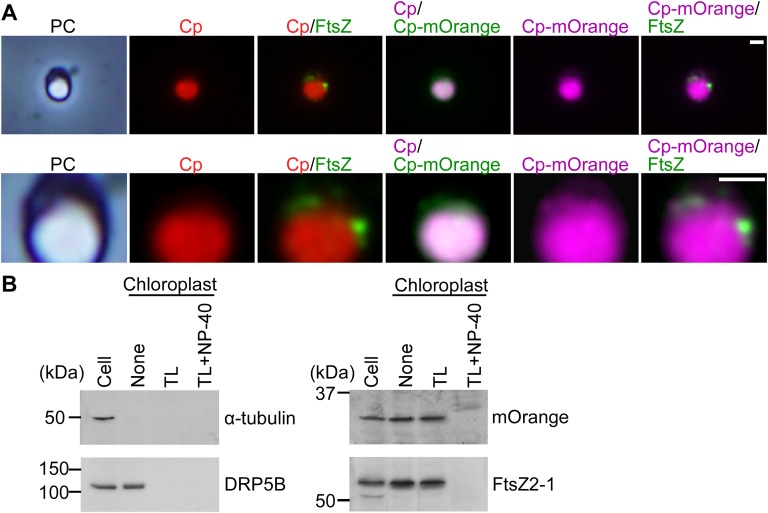Fig. S4.
FtsZ2-1 localization in the FtsZ2-1–overexpressing cells. (A) Immunofluorescence microscopy showing the localization of the chloroplast-targeted mOrange and FtsZ2-1 in the FtsZ2-1–overexpressing cells 24 h after the onset of the induction of FtsZ2-1 overexpression by heat shock. mOrange was targeted to the chloroplast by fusing the protein with the N-terminal chloroplast-transit peptide CmSecA (50). FtsZ2-1 was detected with the anti–FtsZ2-1 antibody. Enlarged images are shown in the lower panels. (Scale bars: 1 µm.) (B) Intact chloroplasts were isolated from FtsZ2-1–overexpressing cells. Then the intact chloroplasts were incubated with thermolysin (TL) in the absence or presence of the detergent Nonidet P-40. Proteins were extracted from the cells (20 µg protein), and the chloroplasts (20 µg protein) treated with thermolysin were loaded. The cytosolic protein α-tubulin, the outer envelope peripheral protein DRP5B, chloroplast-targeted mOrange, and FtsZ2-1 were detected with respective antibodies.

